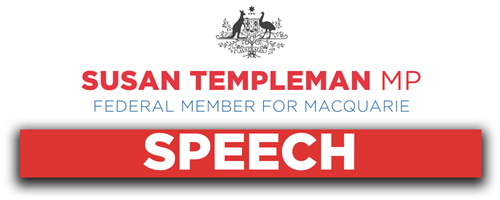
I'm very pleased to speak on the motion put forward by the member for Calare. I've spent a lot of time advocating for better support for communities who face natural disasters— in our case, fires, floods and storms. We're all too aware in the Blue Mountains and Hawkesbury that hotter, drier, higher risk weather conditions are expected during this spring and summer. Following the two years of record-breaking floods across pretty much every state and territory, we expect the main threat for summer to be fast-moving grass and scrub fires rather than those fires that we experienced in 2019-20, but we know we need to be prepared.
We also know that, since Black Summer, the government has taken huge steps forward in how we prepare,
respond and recover from bushfire events. Unlike the response from the government at the time of the
2019-20 bushfires, we are taking preparations for this summer seriously and bringing together around 250 crisis management response and recovery specialists from governments, industry, community and the not-for-profit sector for the first National Bushfire Preparedness Summit later this month. That's a big step forward.
I want to talk about the consequences of natural disaster. It doesn't end when the smoke clears or when the water recedes. We have a government now that recognises the immense hardship faced by people across Australia in the aftermath of natural disasters. In the mountains, it has been 10 years since the 2013 fires took more than 200 homes in Winmalee, Yellow Rock, Springwood, and Mount Victoria—including mine. The memories are still very fresh for many, and the financial and emotional consequences continue. The member for Calare is right when he says it changes lives forever.
For those still trying to find a new normal after the 2019 bushfires and the floods from 2020 right through to
more recent times, it's even harder. For communities west of us, like Eugowra, our community understands the pain, and I know various local community groups, like Rotary, have been out west offering our assistance. I'm very pleased to be part of the flood insurance inquiry the government has established, because that is a major continual sore that festers for people who've been through disasters.
Our job at a government level is to work closely with every disaster impacted state and territory to ensure recovery is appropriate for each individual community and person affected. State and territory governments have the primary responsibility, but we support them with the costs of providing relief and recovery assistance through the jointly funded disaster recovery funding arrangements—the DRFA; I have spoken about that a lot. Under the arrangements, the states determine the type and level of assistance to make available following disaster, and the Australian government co-funds it. But we know there needs to be improvements on how quickly and consistently that response is delivered.
The way previous governments have politicised emergency support is a disgrace. In 2013 the Abbott government changed the rules to restrict access to emergency support the day after people's homes had burned down. In the Northern Rivers we've seen top-up payments to communities in coalition seats and buybacks offered but not consistently across the state. The former New South Wales government pork barrelled recovery funds intended for victims of the 2019 Black Summer bushfires, meaning the Blue Mountains missed out completely in the first round. Now the Albanese government has progressed a range of off-the-shelf grant programs to allow funding to get out the door faster, more consistently and fairer, but we know there is more to be done to improve the timeliness. The review underway by Andrew Colvin is really crucial in giving us the information we need.
In the few moments I've got, I want to run through a couple of things that are different. There has been $94
million invested in bushfire mitigation and preparedness with state and territory governments through the Disaster Ready Fund; it's a start. We're supporting the leasing and positioning of a national fleet of highly specialised firefighting aircraft, and that is on top of the new Chinook at the Richmond RAAF base that New South Wales has bought. We've opened up an upgraded national situation room so we're better collaborating across three levels of government, and that includes having satellite imagery from partner organisations. Plus, we've got new Australia fire danger ratings—all things to try and make people safer this summer.


